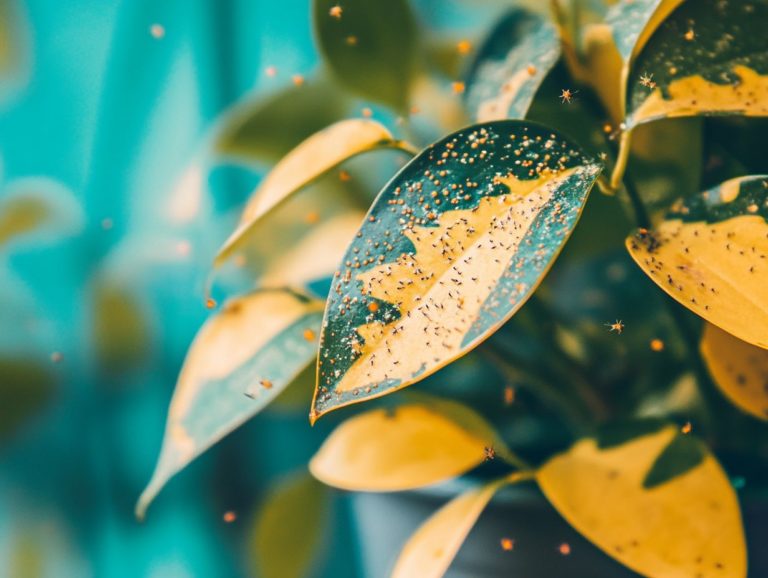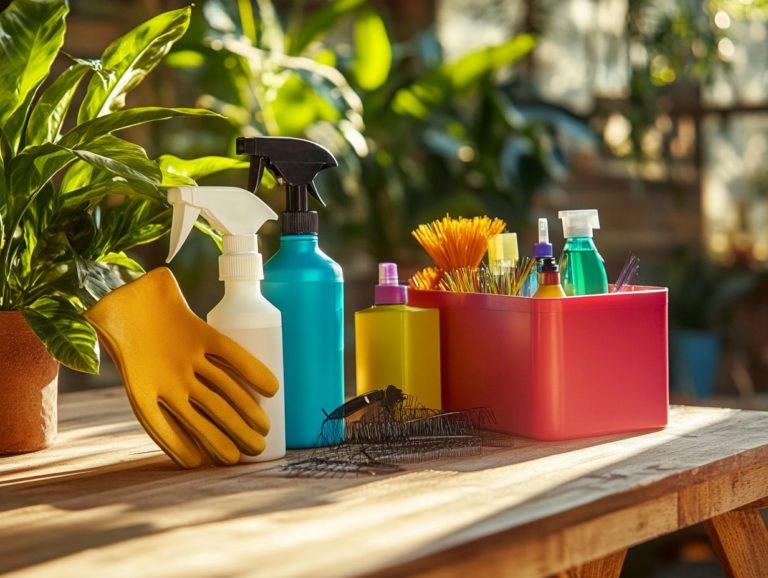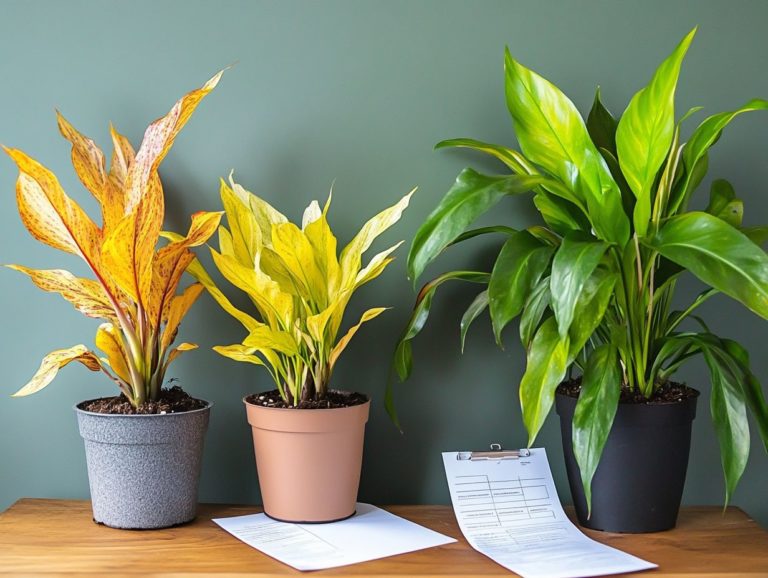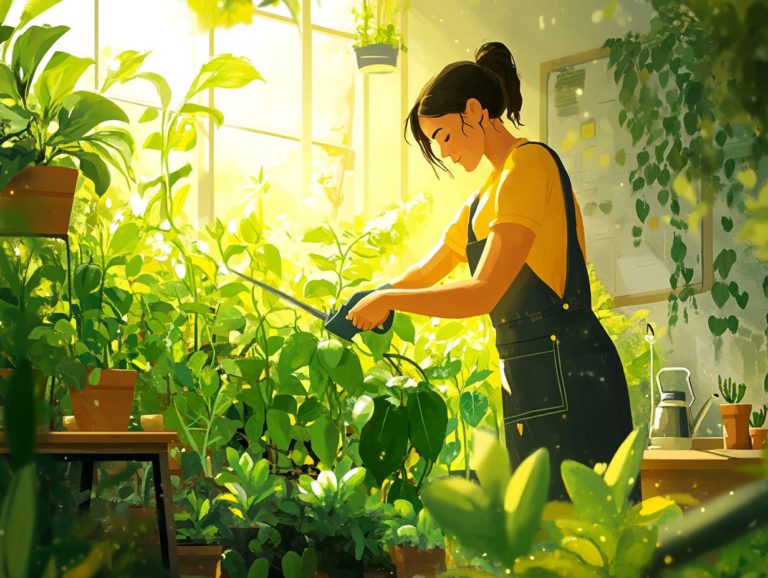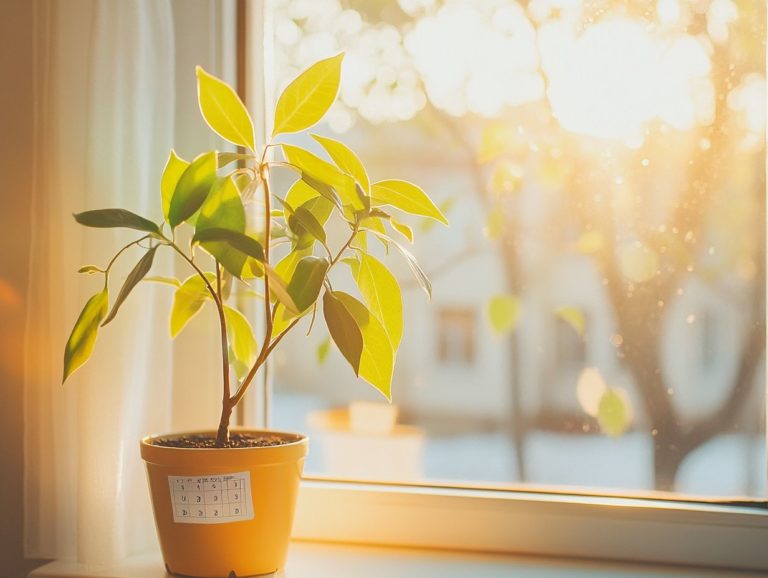Recognizing Scale Insects on Indoor Plants
Are scale insects threatening your indoor garden? These tiny pests can harm your indoor plants. This hidden threat often goes unnoticed until it s too late.
In this article, you ll learn what scale insects are and the common types that could be lurking among your greens.
You’ll gain the knowledge to identify different species and recognize the telltale signs of an infestation, from symptoms on leaves to damage on stems. You ll also discover effective treatment methods and preventive measures designed to keep your plants flourishing.
Prepare to safeguard your garden! Ensure your plants remain vibrant and healthy!
Contents
- Key Takeaways:
- Common Types of Scale Insects
- Signs of Scale Insects on Indoor Plants
- How to Treat and Prevent Scale Insects
- Frequently Asked Questions
- What are scale insects and why are they a problem for indoor plants?
- How can I recognize scale insects on my indoor plants?
- What are the signs and symptoms of a scale insect infestation?
- How can I prevent scale insects from infesting my indoor plants?
- How can I get rid of scale insects on my indoor plants?
- Can scale insects be harmful to humans or pets?
Key Takeaways:
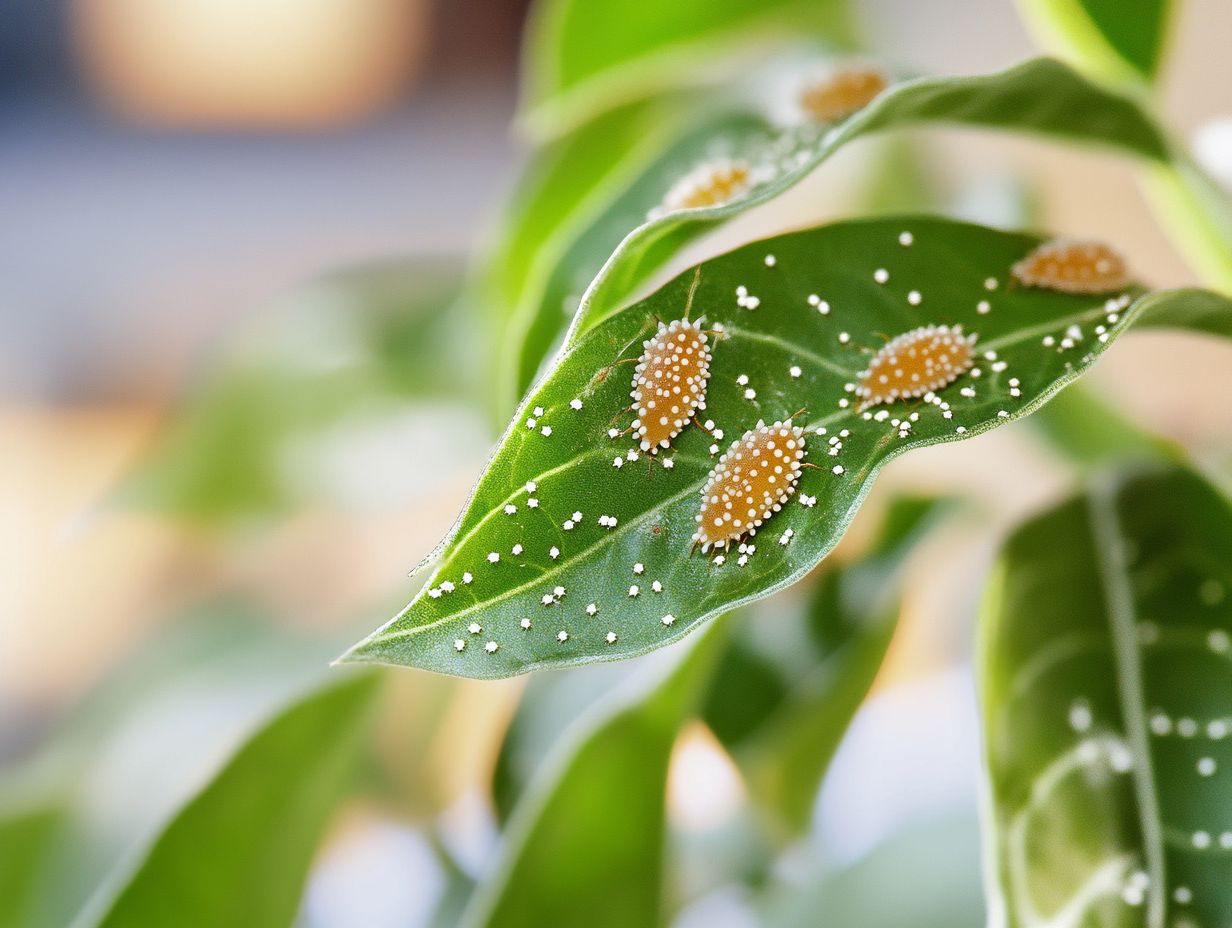
- Scale insects are small, sap-sucking pests that can infest indoor plants and cause damage if left untreated.
- There are various types of scale insects, each with unique identifying characteristics that can help distinguish them from other pests.
- Signs of a scale insect infestation on indoor plants include physical symptoms on the plant itself and visible signs on the leaves and stems.
What are Scale Insects?
Scale insects are tiny pests that suck sap from your indoor and outdoor plants, leading to various health issues. They often attach to the stems and leaves of your beloved houseplants, sipping away at the sap. This can result in yellowing leaves and an overall decline in plant health.
To add insult to injury, they produce a sticky substance called honeydew, which attracts other pests and encourages fungal growth. Understanding and identifying a scale infestation is crucial for effective pest control and maintaining a thriving garden.
The lifecycle of scale insects begins with the crawler stage, where young nymphs disperse from their mother in search of suitable feeding spots. Once they settle down, these little nymphs insert their mouthparts into the plant s tissue, extracting nutrients eagerly.
As they mature into adults, they become stationary and develop a protective coating, making them quite a challenge to manage. Their presence doesn t just sap the vigor from your plants; it can also pave the way for secondary infections.
Effective pest management strategies often focus on physical removal methods. Picture this: using cotton swabs dipped in alcohol to remove them from your plants. Regularly monitoring your plants for signs of scale is essential for early detection and effective intervention. Stay vigilant! Your plants deserve the best care.
Common Types of Scale Insects
You will encounter two primary categories of scale insects: soft scale and hard scale, each presenting its own challenges and indicators for both indoor and outdoor gardeners.
Soft scale insects are known for producing significant amounts of honeydew and often sport a protective coating. In contrast, hard scale insects possess a more rigid exterior, making them particularly stubborn and difficult to eradicate.
To effectively control these pests, it’s essential to tailor your approach according to the specific type of scale infestation and the distinctive signs of damage observed on your plants.
Identifying Different Species
Identifying different species of scale insects is essential for you as a gardener to implement effective treatment and pest control strategies. Each species displays unique visual signs think specific color patterns and the particular spots on the plant they prefer to infest.
By recognizing these characteristics, you can promptly introduce natural predators like lady beetles and parasitic wasps to help manage infestations and minimize damage to your plants.
Scale insects come in various sizes, from tiny specks to larger, more noticeable forms, with colors ranging dramatically from pale yellows to deep blacks. These distinct traits not only aid in identification but also emphasize the importance of monitoring their feeding habits. If you notice any issues, check for signs your indoor plant has pests, as some species tend to target specific plants.
By integrating biological control methods, such as introducing natural predators, you can significantly reduce your reliance on chemical treatments. Creating a balanced ecosystem, incorporating companion planting, and maintaining healthy soil will empower you to cultivate a thriving garden that naturally deters scale infestations while promoting robust plant health.
Signs of Scale Insects on Indoor Plants
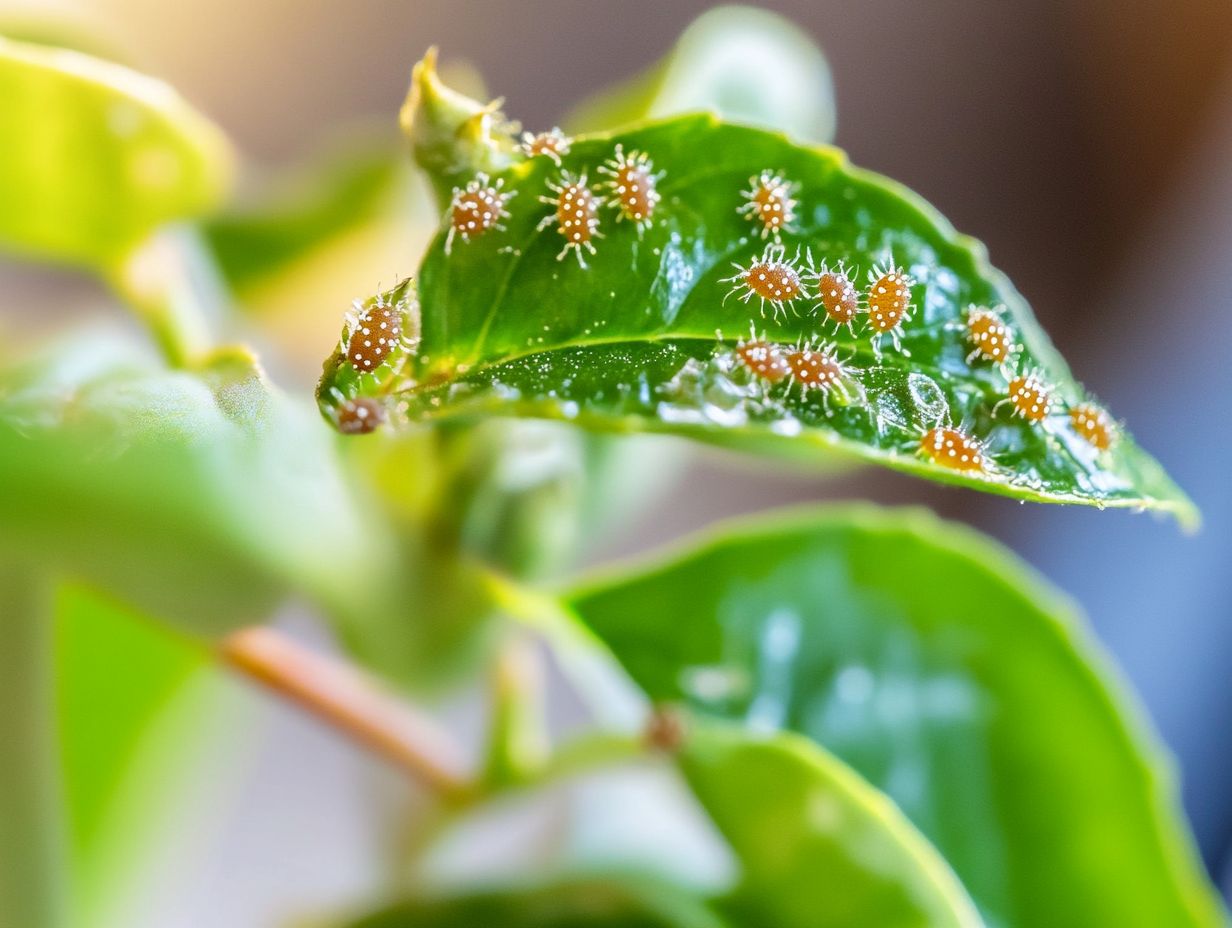
You may begin to notice signs of scale insects on your indoor plants in several telling ways. Each one is detrimental to both their health and appearance.
One of the first indicators might be sticky substances on the leaves, a result of honeydew excreted by these pests. This sugary residue doesn t just create a mess; it also attracts ants and can lead to the formation of sooty mold.
Furthermore, yellowing leaves are a prevalent visual clue of scale infestation. This signals nutrient depletion and jeopardizes the plant s overall vitality. Recognizing these signs early is crucial for effective pest management, ensuring your plants remain vibrant and thriving.
Physical Symptoms on Plants
Physical symptoms of scale insects on your plants can manifest as curling leaves, stunted growth, and noticeable scale damage on stems and leaves. As these pests feast, they weaken the plant, leading to a visible decline if left untreated.
Regularly inspecting and monitoring your plants is key to early detection. This allows you to use physical methods to remove them and maintain their health.
By understanding these symptoms, you can ensure timely pest control and effective management. In addition to visible damage, you might find a sticky residue called honeydew, which often accompanies scale infestations and can attract unwelcome guests like ants.
You may also notice yellowing foliage and sooty mold, which can diminish your plant s aesthetic appeal. Keeping your plants healthy is essential through proper watering and fertilization.
Introducing natural predators like ladybugs can further assist in managing these pests. Conducting routine inspections weekly enables you to catch early signs of trouble.
If you spot scale insects, promptly remove affected leaves. Apply insecticidal soap a type of soap made to kill insects or horticultural oil for a comprehensive approach. This ensures your distressed plants make a swift recovery.
Visible Signs on Leaves and Stems
Visible signs of scale insects on leaves and stems can significantly impact the aesthetic appeal and health of your plants, whether they re indoors or outdoors. These pests often make their presence known as small, immobile bumps that can range in color from white to brown or even black, depending on the species.
As infestations worsen, those waxy coverings become more pronounced. This often leads to yellowing leaves and eventual drop. In advanced stages, your plants may exhibit stunted growth, and the secretion of honeydew can attract additional problems, such as sooty mold or other pesky intruders.
This underscores the importance of implementing proactive pest management strategies. Untreated scale insect infestations can spiral out of control, disrupting the local ecosystem and jeopardizing plant health. Staying vigilant and intervening early is essential to safeguarding not just your individual plants but also the broader environment.
How to Treat and Prevent Scale Insects
Dealing with scale insects demands a comprehensive strategy to safeguard the health and recovery of your plants. Consider using horticultural oil and insecticidal soap, both of which have proven effective in managing scale infestations by targeting adult insects as well as their more vulnerable crawler stage.
Beyond these treatments, adopting preventive measures can markedly diminish the chances of future infestations. This fosters a more vibrant and resilient garden environment for you to enjoy.
Don t wait! Check your plants today to catch any potential infestations early.
Effective Treatment Methods
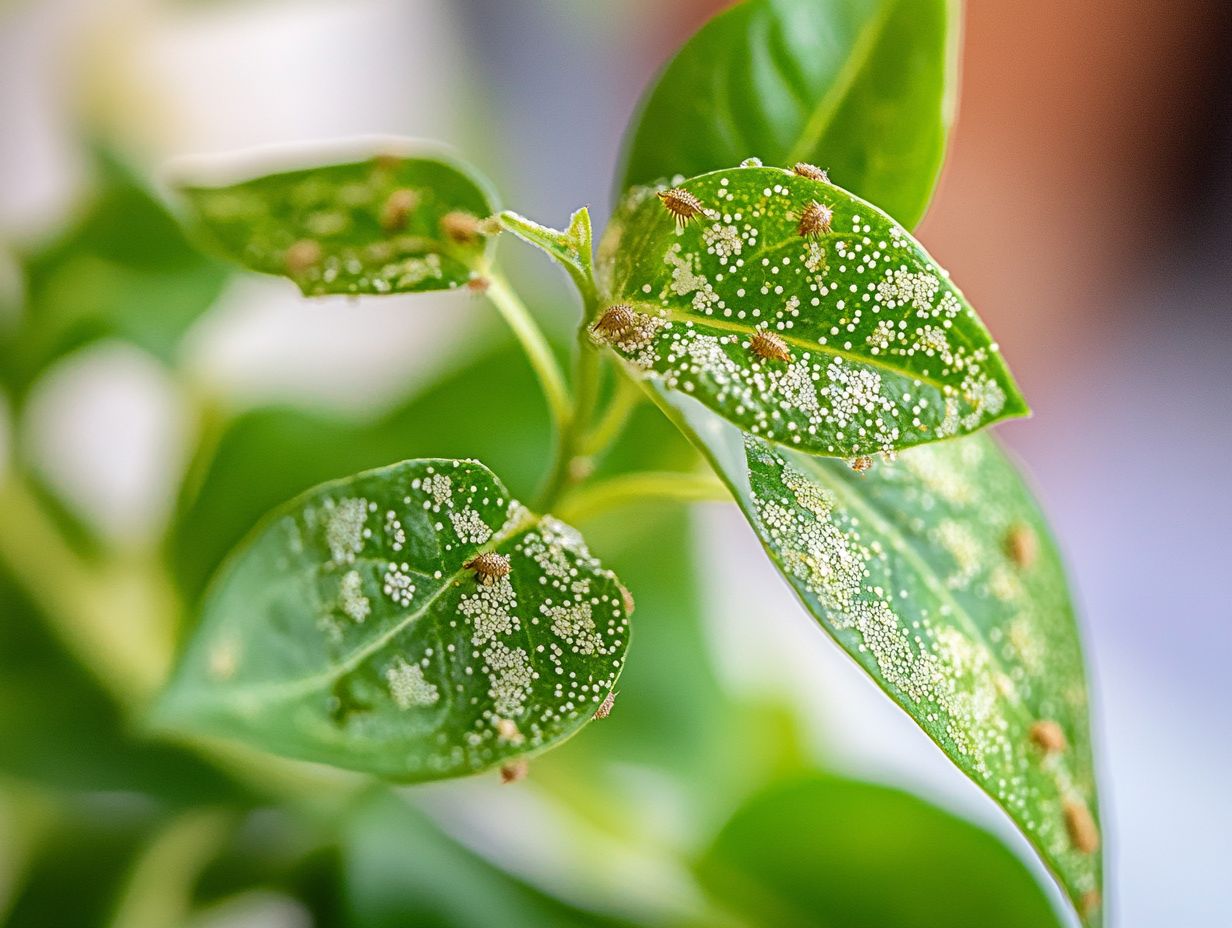
You can effectively treat scale insects with a mix of insect treatments, pest control techniques, and biological strategies. This approach helps manage infestations sustainably.
Use insecticidal soaps and horticultural oils to eliminate both adult insects and their eggs. Spray the insecticidal soap mixed with water directly onto the pests, especially on the undersides of leaves where they often hide.
Apply horticultural oils in a similar way, but do this during the cooler parts of the day to prevent any damage to your plants.
For biological control, introduce ladybugs or lacewings into your garden as they are natural predators of scale insects. Regular monitoring and maintaining a tidy garden can enhance these efforts.
By integrating these biological methods, you reduce reliance on chemicals, nurture a healthy ecosystem, and encourage beneficial insect populations.
Preventive Measures for Future Infestations
Taking steps to prevent future infestations of scale insects on your indoor and outdoor plants is crucial. Regularly monitor your plants to identify pest issues early.
Inspect your plants for telltale signs like discoloration or a sticky substance to catch potential issues before they escalate. Good gardening practices, such as ensuring adequate air circulation and maintaining proper soil moisture, promote healthier growth.
This proactive approach strengthens your plants and makes them less vulnerable to pests. Using barriers like horticultural oil effectively deters scale insects. Introducing beneficial insects, like ladybugs, enhances your natural pest management strategy.
Frequently Asked Questions
What are scale insects and why are they a problem for indoor plants?
Scale insects are tiny bugs that suck sap from indoor plants. They can drain nutrients, leave behind a sticky residue, and attract other pests, weakening the plant and making it more susceptible to diseases.
How can I recognize scale insects on my indoor plants?
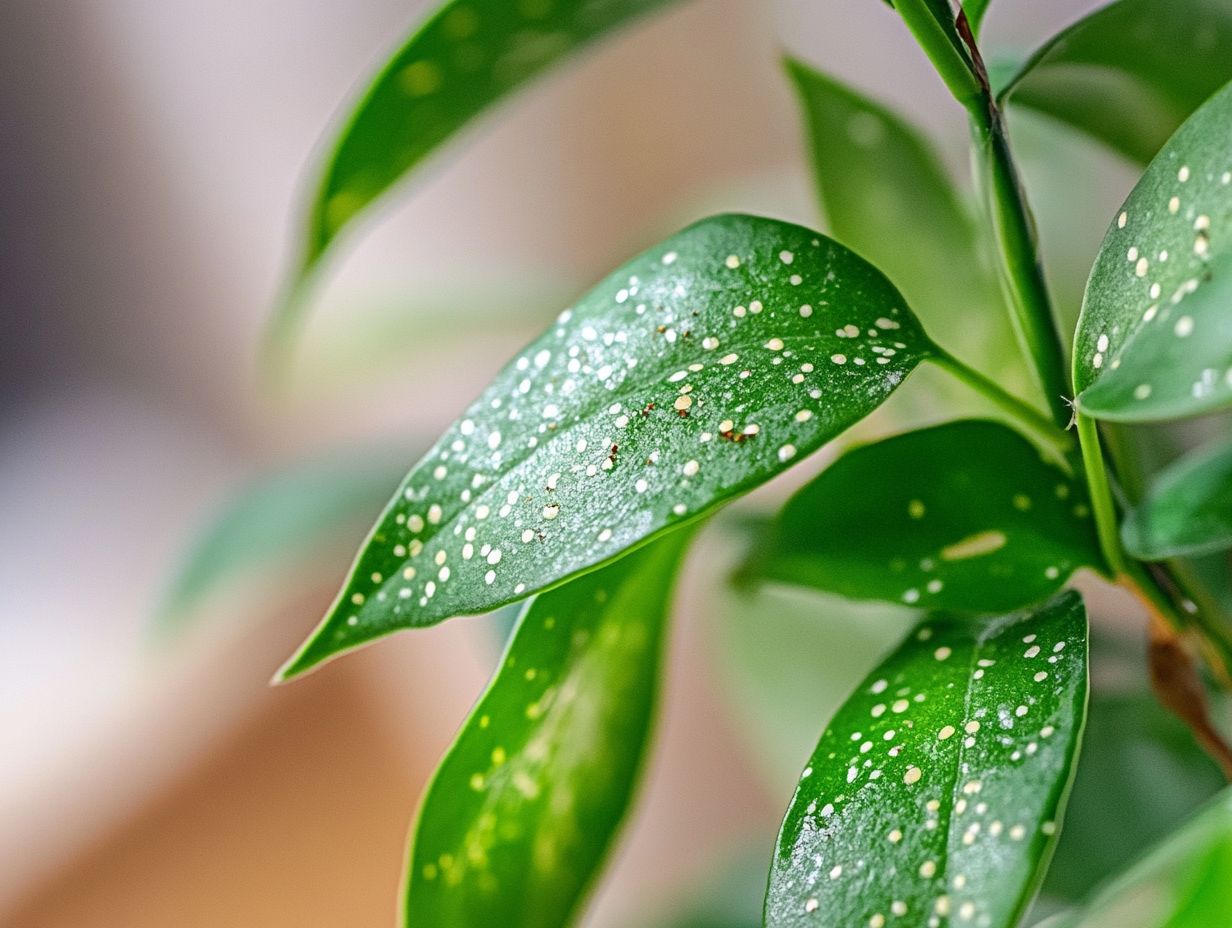
These insects have small, hard, oval-shaped bodies ranging from light tan to dark brown. They may leave a sticky or shiny residue on the plant’s leaves, stems, or branches.
What are the signs and symptoms of a scale insect infestation?
Signs of a scale insect infestation include yellowing leaves, stunted growth, and a sticky substance on the plant. You might also notice many ants around the plant, attracted to the honeydew left by the scale insects. Effective control of scale damage can prevent more severe plant issues.
How can I prevent scale insects from infesting my indoor plants?
The best way to prevent scale insects is to inspect your plants regularly for signs of infestation. Proper identification can lead to effective methods for managing infestations.
Quarantine new plants before bringing them indoors, regularly clean and dust your plants, and avoid over-fertilizing and over-watering to help prevent infestations.
Start your pest control journey today and keep your plants healthy!
How can I get rid of scale insects on my indoor plants?
If you spot scale insects on your indoor plants, you can try a few effective methods. Use a cotton swab dipped in rubbing alcohol to physically remove them.
Another option is to spray a solution of neem oil and water on the affected areas. For serious infestations, consider using insecticidal soap, which is specifically designed to eliminate insects.
If the problem persists, seek professional help. Always prioritize plant safety when using any treatment.
Can scale insects be harmful to humans or pets?
Scale insects do not pose a threat to humans or pets. However, it’s wise to keep them away from children and pets as a precaution.
Some insecticides used to treat scale insects may be harmful to pets. Follow the instructions carefully and keep pets away from treated plants.
Always think about the environmental impact of your pest control methods.

